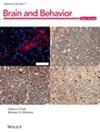Abnormal Functional Connectivity of the Primary Sensory Network in Autism Spectrum Disorder: Sex Differences, Early Overdevelopment, and Clinical Significance
Abstract
Introduction
Primary sensory processing is atypical in patients with autism spectrum disorder (ASD) and affects daily functioning. However, the functional connectivity (FC) patterns of primary networks in ASD have not been systematically investigated.
Methods
Primary networks were defined as four regions of interest (ROIs) in each brain hemisphere. We analyzed ROI-wise FC in 105 individuals with ASD and 132 typically developing (TD) participants from Autism Brain Imaging Data Exchange I. We calculated the correlation between abnormal FC and clinical scores. Additionally, data from 53 individuals with ASD from our laboratory's two-site dataset were used to validate the results and assess the effects of sex and age on FC consistency.
Results
Regarding the ROI-wise connectivity, significant group differences in FC emerged in several regional pairs, particularly in the primary auditory and somatosensory regions. Abnormal brain regions correlated with clinical symptoms. As age increased, abnormal FC had an initial fast and then slowing development trend, and the abnormal FC in females was higher than that in males. The two-site dataset results were consistent with those of the multisite dataset in assessing the influence of age and sex on FC.
Conclusion
Abnormal FC exists in the primary sensory cortex of patients with ASD, which correlates with clinical outcomes and may cause impairments in advanced cognitive functions. In addition, the primary sensory cortex of patients with ASD may undergo excessive growth in the early stages and demonstrate imbalanced development according to sex. These findings may help identify new biomarkers for ASD.


 求助内容:
求助内容: 应助结果提醒方式:
应助结果提醒方式:


